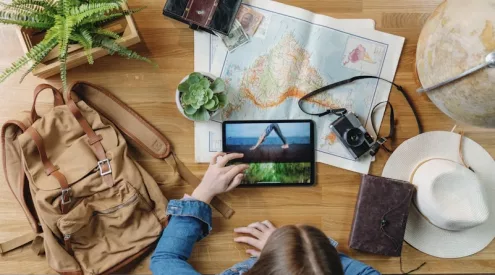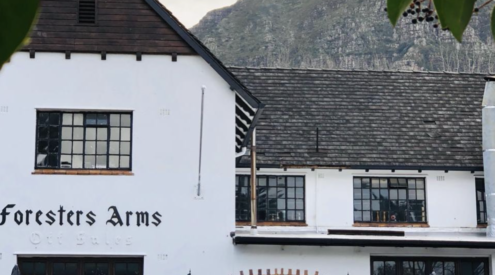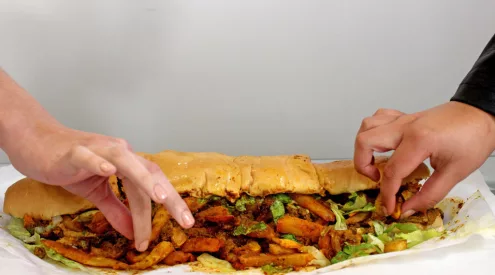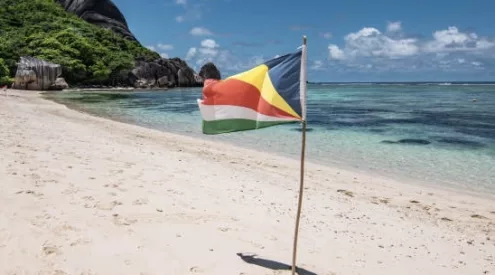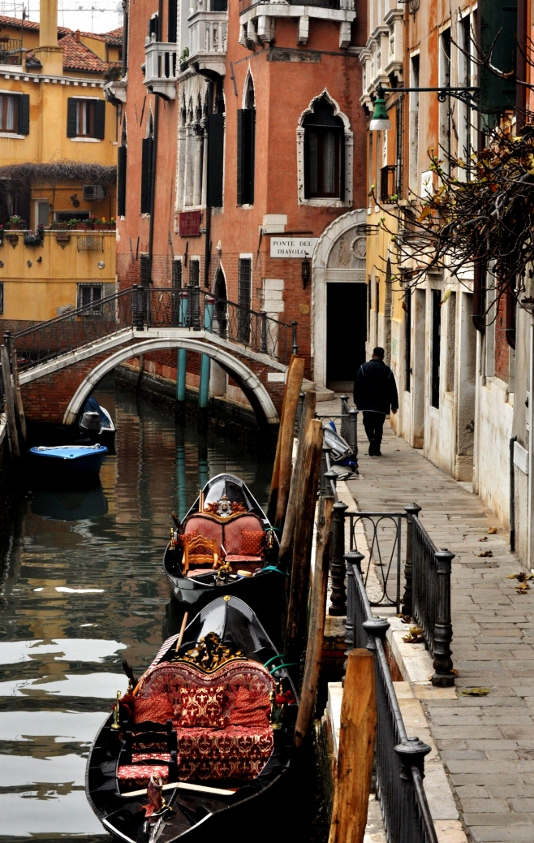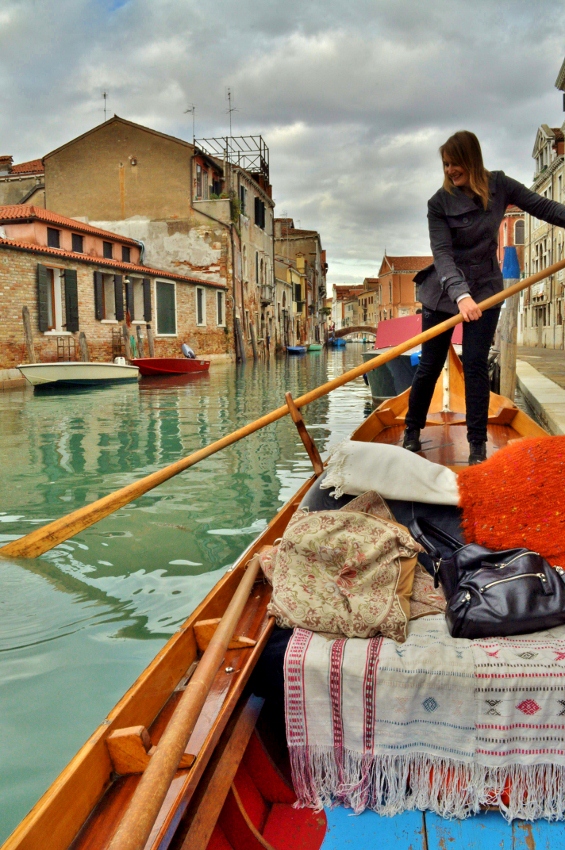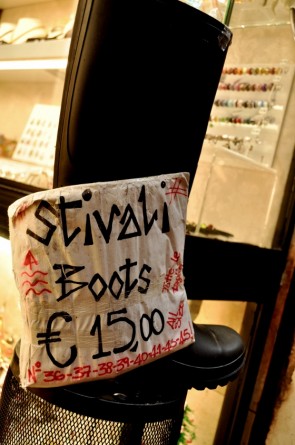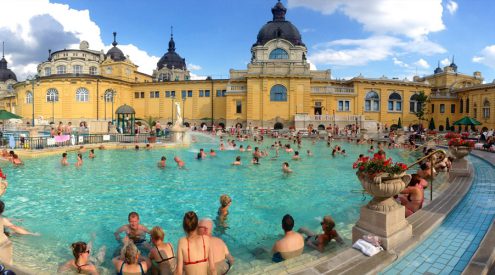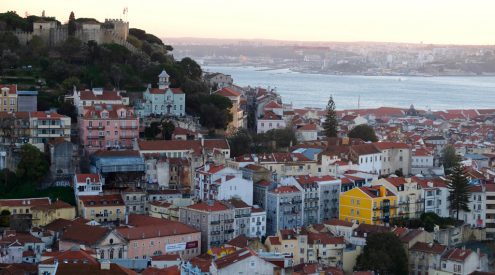Black and white photos of ‘old’ Venice, taken just a few decades ago, line the wall in the coffee shop I’m standing in, Ca’Vè Caffè, not far from the Rialto Market.
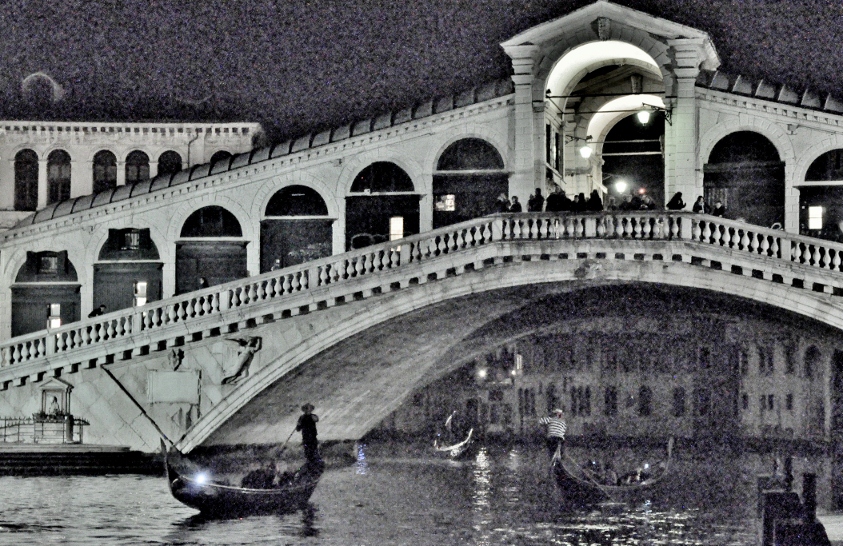
What’s striking about most of them is that they depict Venice as a close-knit community enjoying good old fashioned fun. They show local Venetians – mothers with their children, Santa Clause gondoliers at Christmastime, young men paddle racing on the lagoon – captured against the iconic backdrop of the Grand Canal, the outdoor markets and the narrow, winding streets. Today you would be hard-pressed to photograph in any of these places without a horde of tourists in sight.
In fact, today you’ll be hard pressed to meet a ‘real’ Venetian during a visit. There are still local residents, sure, but over the years their numbers have dwindled to less than 60 000 and it’s easy to understand why. Groceries in Venice are 30% more expensive than on the mainland. Property prices are unaffordable for most (a 100-square meter flat in the city centre fetches an average price of R9,2-million). Each year 22-million tourists mob the city’s tiny center, most of them just for the day. Acqua alta (high water) floods submerge its squares and pour into its ancient buildings every November and December.

But for all the impracticality of a car-free city built on a bed of wooden pylons set atop a marshy network of ancient islands, Venice is still – undeniably – magical.
What other city in the world is a maze of cobblestone walkways, bridges and secret passages that flow past rising buildings on one side while the waters of the lagoon flow on the other? What other city is blanketed in a melodramatic fog each night, lit by the glow of flamboyantly pink lanterns that cast the shadows of her bridges and shimmer across the waters of her canals? In Venice, the smell of the sea seems to permeate everything and time ticks over to the rhythm of shrieking seagulls, bellowing fog horns and the tolling of bells (read Venice: the most romantic city in Europe).
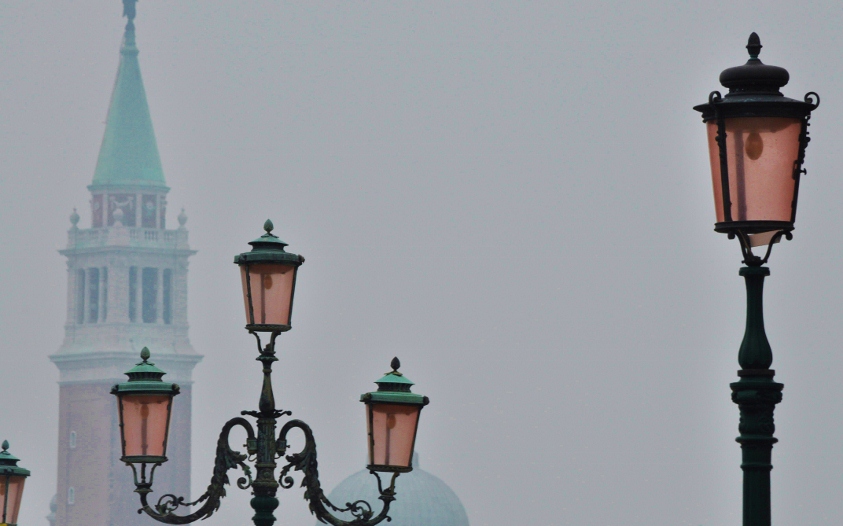
Even the acqua alta floods hold an undeniable power. When the old World War II air raid sirens are raised, echoing over the city to signal the high tide is about to submerge it, I imagine what it must feel like to know one’s ship is in danger of going down. When I see the waters of the Venetian lagoon threatening to beach gondolas on the sidewalk, and bubbling up out of the drains of Piazza San Marco (Saint Mark’s Square) pouring over the pavement and flooding it up to my knees, I am forced to reconsider the meaning of ‘solid ground.’
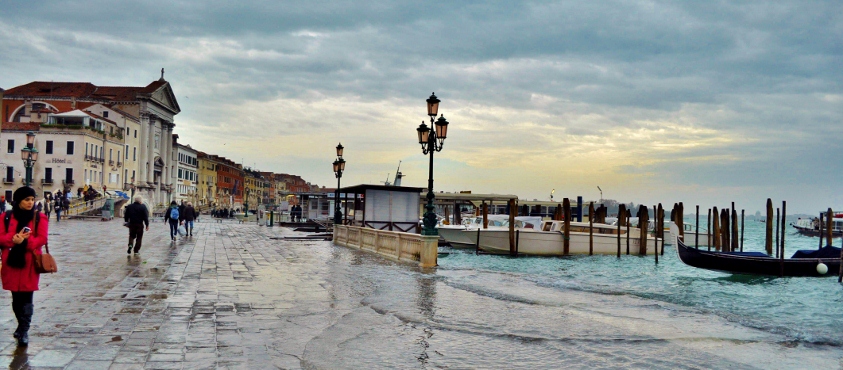
Venice is defined by the water that surrounds it, but it’s also so much more.
The ridiculous excess of Carnivale (which inspired a tradition to go out in public wearing one’s masked disguise for much of the year); the cuisine inspired by exotic seafood like spider crab, sea snails and mantis shrimp that are caught in the lagoon; the uniquely Venetian gothic architecture that is a combination of Byzantine and Arab styles; the tradition of downing ombre (small glasses of wine) throughout the day and snacking on chicheti, and afternoon spritz (a Venetian cocktail made of Prosecco, sparkling water and Campari or Aperol) enjoyed in an open air square – all these things colour Venice the shades of a unique little world.
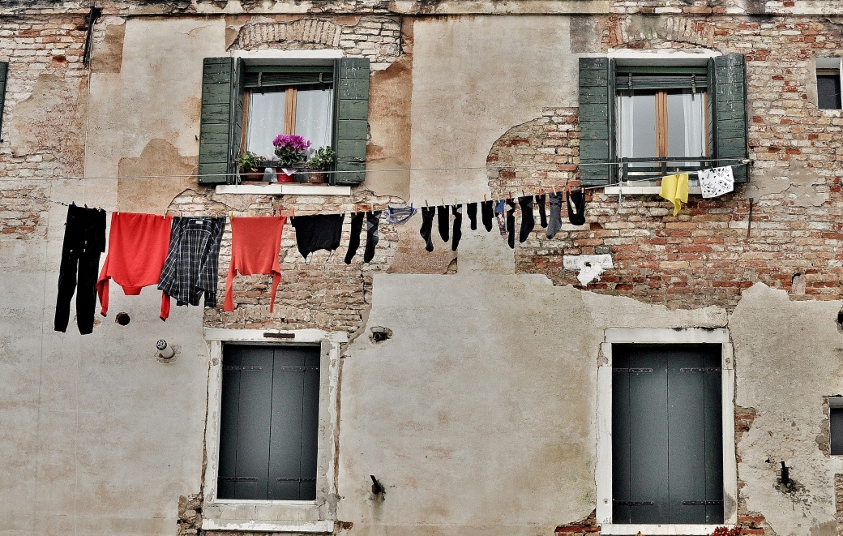
Discover Venice's quiet residential areas on the outskirts of town, like this one in Castello District.
The most important thing visitors need to know about Venice is how to get around town. It’s compact but with so much to see you’ll save a lot of time and energy if you use the vaporetto (water busses) to short-cut through the canals to the part of town you want to be in. You’ll also need a small, detailed map to navigate the sometimes (read: almost always) confusing web of passages by foot.
Top 10 Things to Do in Venice
1- Skip the gondola ride and arrive at your hotel by water taxi.
It will be the fastest €95 you’ll ever spend but it’s worth it for the thrill. Within minutes of leaving the Marco Polo airport or train station you’ll be cruising along the Grand Canal like an extra in a James Bond movie, and be delivered to the water entrance of your Venetian hotel in style.
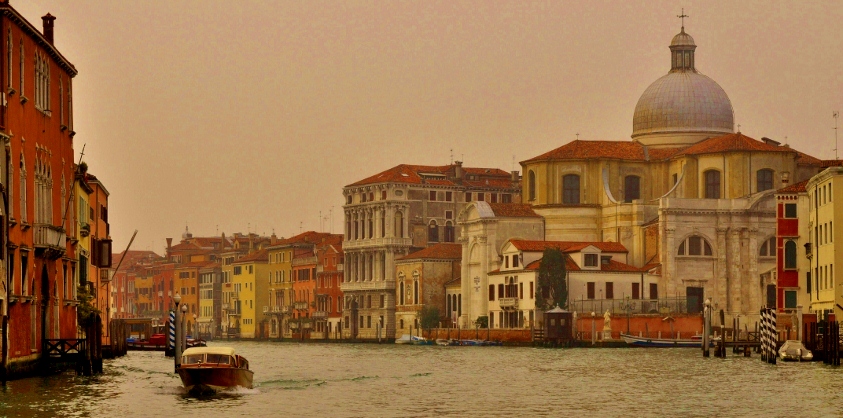
2- Spend an afternoon at Piazza San Marco.
Wander between the Torre dell’Orologio (Clock Tower), Basilica San Marco and the Doge’s Palace, and listen to the sounds of conversation and classic music dancing together in one of the world’s most iconic car-free urban centers.
3- Admire the art.
Visit the Gallerie dell’Accademia where you can see works by Leonardo da Vinci and Venetian paintings from throughout the 18th century, or explore one of Europe’s most groundbreaking displays of American and other modern art in an unfinished palace on the banks of the Grand Canal. The former home of art collector Peggy Guggenheim (her ashes are buried in the back garden near her 14 Lhasa Apso dogs) holds a particularly personal collection, with the art hanging in much the same position it did while she was in residence.
4- Climb to the top of the San Giorgio Maggiore Campanile.
Skip the queues in San Marco Square and hop onto the vaparetto to San Giorgio Maggiore where the bell tower offers the most stunning panoramic view across the lagoon towards Saint Mark’s Square and over the rest of Venice (for a taste of what Venice looks like from a height, watch this video-tour of Venice form the air). Oh, if you’re not feeling like all the extra exercise, there’s also a lift.
5- Wander and get lost.
Venice’s labyrinth of walkways and bridges hold the intrigue of a thousand secrets. Go just before dawn to watch as the fog lifts and the sunrises over Venice’s undiscovered east end, and afterwards head to the Rialto Market to watch as seafood, freshly caught in the lagoon, is delivered for the morning’s trade.
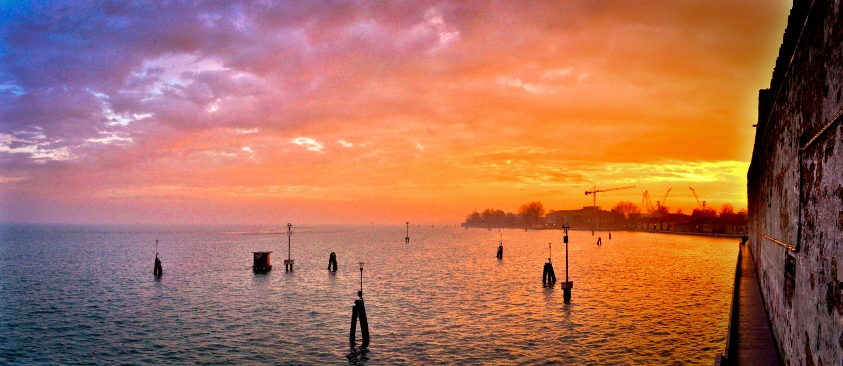
6- Shop till you drop.
Venice is packed full of tiny shops that line the narrow walkways, one after another with hardly a break. Thankfully it’s not all glass, lace and Carnevale masks, but if you’ve got your heart set on that sort of thing look out for authentic quality at Vecchia Murano Glass in St. Mark’s Square. Jesurum is the go-to shop of European Royalty looking for handmade lace and linen. For handcrafted, traditional masks visit Mondonovo Maschere where you can see them being made, or Ca’ Macana which has supplied top Hollywood films like Eyes Wide Shut. Another notable shop is the ancient Antica Legatoria Piazzesi, Venice’s oldest shop for handmade paper and books.
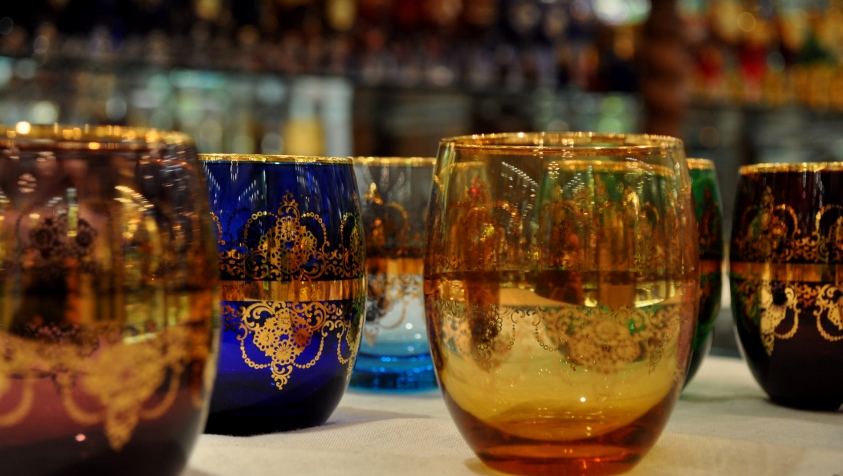
You'll find the same products at Vecchia Murano Glass (right in San Marco Square) as on Murano Island without the added travel. They also do glass melting and blowing demonstrations.
7- Indulge in Venetian fine cuisine and wine.
If you’re looking to try regional specialties like bacala manecato (cod, whipped into a creamy pâté with parsley and olive oil) or polenta so fresh and airy you’ll be hooked forever, not to mention a fully stocked cellar of the best regional wines with many available by the glass, head to Osteria Enoteca San Marco (located at Calle Frezzeria, San Marco, 1610). Presentation is of a gourmet standard, the setting of dark wood paneling, glass windows and candlelight is romantic, and the price (average €50 for a 3-course meal including wine) is more than fair for what you get (Tips for drinking in Venice).
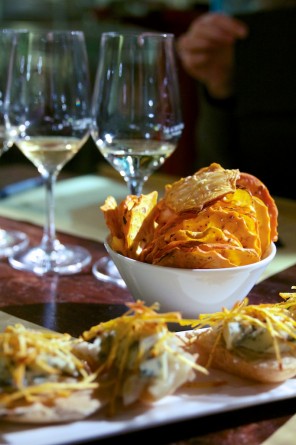
Delicious Cicchetti and Wine at Nan McElroy's Venetian Vine wine tasting course.
If you want to learn more about the great wines of the Veneto – like Vernaccia Nera, Ribolla Gialla, and Greco di Tufo – join sommelier Nan McElroy’s Venetian Vine wine tasting course. Conducted at her little black book of osterias that are popular with visitors and locals alike. Nan knows the proprieters personally, she’s passionate about life in Venice, and her enthusiasm and in-depth knowledge of wine – not to mention her smile and contagious laugh – all combine to create the perfect way to spend a relaxed evening sipping wine in good company.
8- Take a walking tour.
A walking tour is a great way to experience Venice through the eyes of a local. You can finally put the map down while they navigate you through the maze of streets and inform you about all sorts of interesting facts (watch this video of a slow walk through Venice). Igor Scomparin, Tour Leader in Venice, treated me to an afternoon wandering the Castello district, visiting little-known shops like the eccentric Libreria Acqua Alta shop, which is bursting at the seams with books piled high in boats, bathtubs and gondolas. There’s even a book ‘staircase’ offering a private view of the canals.
Karen Henderson of The Venice Experience is an American who, along with her husband, retired to Venice some years ago and offers you a backstreets tour filled with all the enthusiasm you can hope for from a person who is living out their (and your) Italian dream. For a tour with a tasty twist, join in on local Cecilia Cambero’s Venice Urban Adventures’ Cicchetti Tour where you can sip and taste your way through Venetian history, culture and nightlife on a tutored tasting of wine and Venetian snacks.
9- Learn to row like a gondolier.
Experience the thrill of cruising the canals of Venice by your own steam. After walking through a residential area away from all the crowds, I met Jane – founder of Row Venice and my rowing instructor – in a marina of the Venetian lagoon. Together we glided through the canals of the neighborhood while Jane taught me the voga alla veneta rowing style. The solitude of being on the water was occasionally broken by the passing of motorized boats (it’s not all gondolas on the water) full of young teens playing loud music and the flirtatious whistling of construction workers who seemed to take a particular interest in the sight of two women rowing a gondola. In a few hours, I learned all about the history of gondalering, about the different types of gondola boats, saw how people live in the ‘real’ Venice, and experienced rowing a gondola as a modern day pastime, unique in the world but standard in Venice.
10- Sit back and people-watch
Enjoy the age-old pastime of observing others over an ombre or a spritz in one of Venice’s medieval bars, or outside in a campi. Try La Cantina in the vibey Canneregio district (on Strada Nuova, just a few minutes walking from the D’Oro Vaparetto stop), where delicious chichetti is served with a gourmet twist according to the freshest ingredients available on the day. You’ll have to ask the barman what’s on offer as there isn’t a menu. They also serve a long list of wine by the glass and owner Francesco’s own Morgana craft beer.
Tip: If you’re visiting during the Aqua Alta season (Nov & Dec), a pair of gum boots will come in VERY handy, especially when you have limited time and realize you can’t leave your hotel without walking through knee high water (hint – it’s not ‘just’ water). When the floods occur they only last for a few hours until the tide recedes, so instead of packing a pair check with your hotel if they provide them to guests as many of the higher-end hotels do. Borrowing is much more convenient than lugging a pair with you for the duration of your trip.

